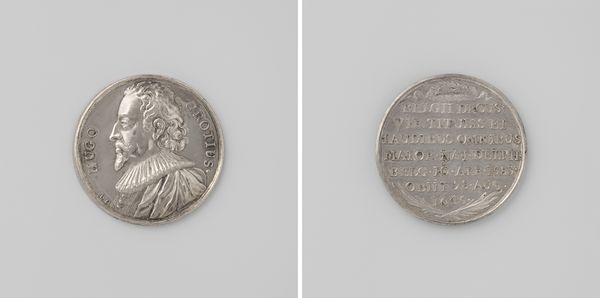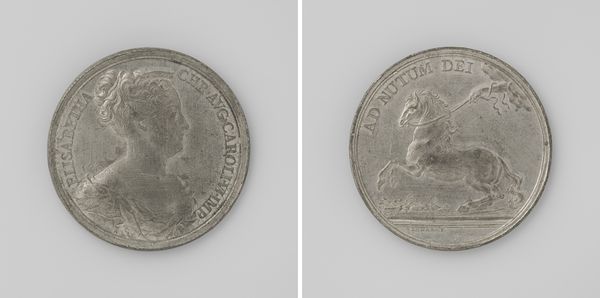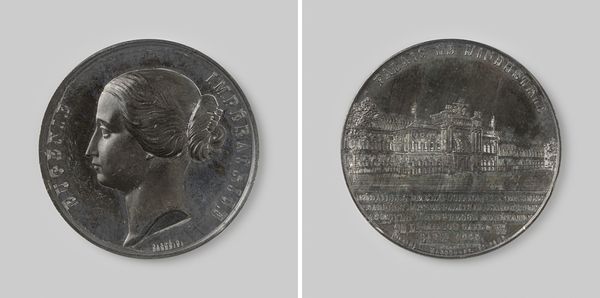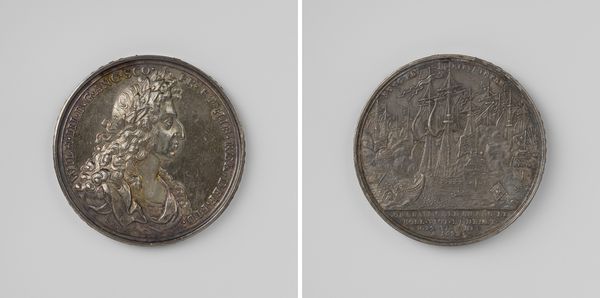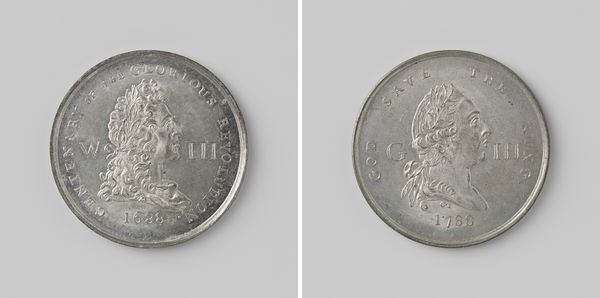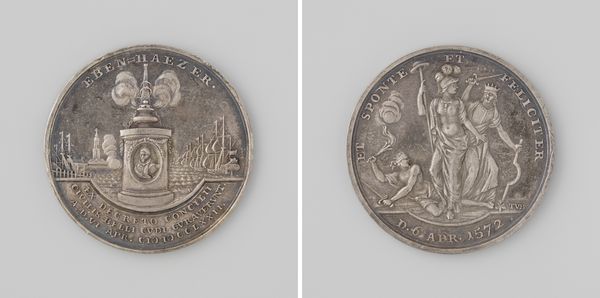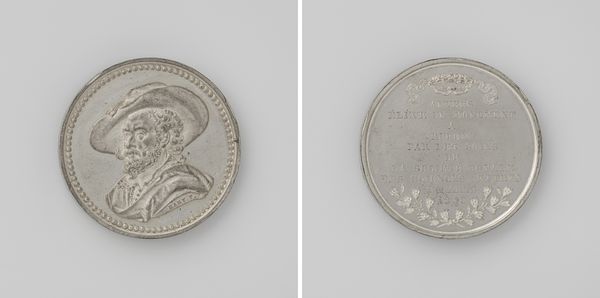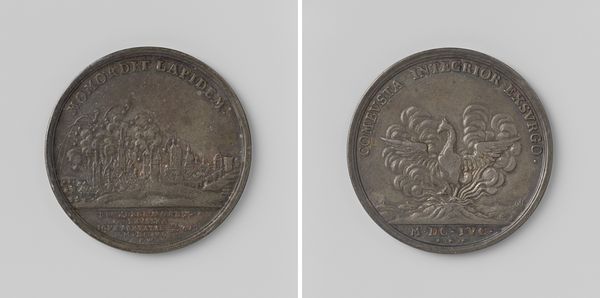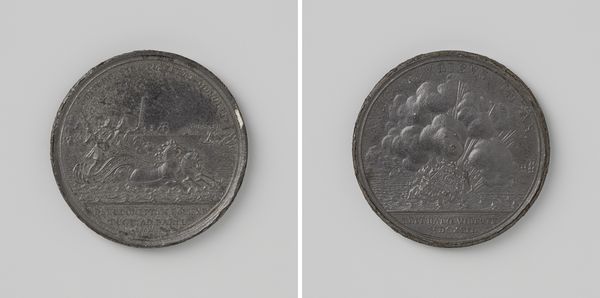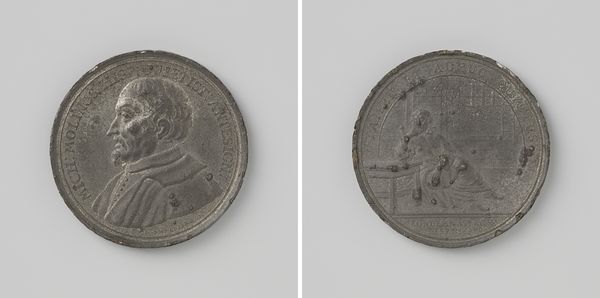
metal, relief, sculpture
#
portrait
#
baroque
#
metal
#
sculpture
#
relief
#
sculpture
#
history-painting
Dimensions: diameter 3.8 cm, weight 19.61 gr
Copyright: Rijks Museum: Open Domain
Curator: This intriguing medal, titled “Overlijden van Willem IV” or "The Death of William IV," dates back to 1751 and was crafted by Nicolaas van Swinderen. Editor: The cool gray metal, perhaps silver or pewter, gives a somber feel, befitting its subject. The profile portrait, very crisp, has a weighty presence. I assume that the medal would commemorate William's legacy in a time of national introspection and shifts in power dynamics. Curator: Indeed. Metalwork of this kind played a vital role in communicating social narratives. The relief technique lends the subject formality and historical weight. Consider also the processes required: from the mining and refinement of the metal itself, to the design and striking of the medal—skilled labor was required at every stage. Editor: I agree, thinking about that entire production chain places it firmly in a specific economy. What stories can you glean from the other side? It depicts a kind of obelisk or cenotaph. I see text, an emblem. A rising sun as well. Curator: You have a good eye. The inscription details William’s birth and death dates, cementing his temporal existence and transition to another realm. And the sunrise? Quite a conventional trope, signifying the hope of rebirth and everlasting glory. Editor: Absolutely. Though the medal’s material itself—cold and lasting—subtly underscores how wealth, privilege, even grief are made material. How even personal sorrow turns into commodity, a circulate-able, political statement. Curator: Precisely. These medals allowed for mass dissemination of controlled representations, influencing public sentiment and contributing to collective memory-making around important sociopolitical events, like this transfer of power. Editor: So even in what appears a static, almost neoclassical format, a real dynamic tension is revealed between private experience, material form, and ideological intention. Thank you. Curator: An excellent point. Analyzing the object reveals insights into 18th-century society, its modes of production, and methods of managing legacy through metal.
Comments
No comments
Be the first to comment and join the conversation on the ultimate creative platform.
